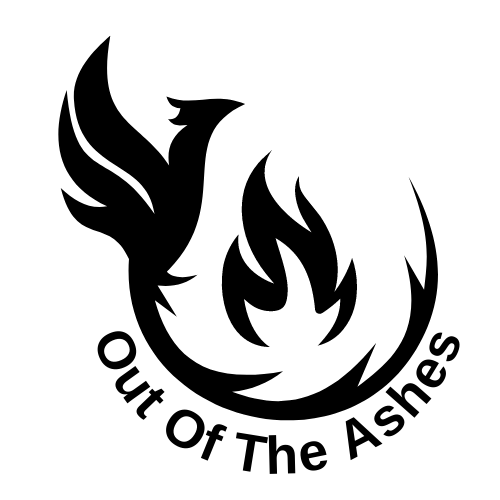Beyond the Pain: Side Effects of Abuse

Written by Brooke Hamel
Abuse leaves deep emotional, psychological, and even physical scars that persist long after the abusive situation has ended. Survivors often find themselves struggling with symptoms they never expected—PTSD, anxiety, depression, trust issues, and even behavioral changes like codependency, obsessive-compulsive tendencies (OCD), and controlling behavior. While escaping an abusive environment is a significant step toward healing, understanding and addressing the lasting trauma effects is just as crucial.
Recent research highlights the long-term psychological, emotional, and behavioral impacts of abuse survivors and how they can work toward recovery.

Psychological and Emotional Effects of Abuse
Even after leaving an abusive relationship or situation, survivors often experience long-term mental health challenges that affect their daily lives.
Post-Traumatic Stress Disorder (PTSD) and Complex PTSD (C-PTSD)
Survivors of abuse frequently develop PTSD or Complex PTSD (C-PTSD) due to prolonged exposure to trauma. PTSD symptoms include flashbacks, nightmares, hypervigilance, and emotional numbness (van der Kolk, 2014). Unlike PTSD, C-PTSD results from sustained abuse over time and can include difficulty regulating emotions, feeling permanently unsafe, and distorted self-perception (Herman, 1997).
Anxiety and Depression
Chronic anxiety and depression are two of the most common long-term effects of abuse (Dworkin, 2020). Survivors often struggle with persistent feelings of dread, low self-worth, and difficulty finding joy. These conditions may worsen without proper treatment, often leading to self-isolation or unhealthy coping mechanisms.
Dissociation and Emotional Numbing
Many survivors experience dissociation, a psychological defense mechanism where the mind disconnects from traumatic memories or overwhelming emotions (Van der Hart et al., 2006). This can manifest as memory gaps, feeling detached from reality, or struggling to connect emotionally with others.
Hypervigilance and Trust Issues
After enduring abuse, survivors often remain in a state of hypervigilance—constantly scanning for danger, even in safe environments (Porges, 2011). Trust issues may also develop, making it difficult for survivors to build healthy relationships.
Guilt, Shame, and Low Self-Esteem
Abuse survivors frequently internalize the negative messages they received, leading to guilt, shame, and low self-esteem (Walker, 2017). They may believe they were responsible for the abuse or struggle to see their own worth.

Behavioral and Social Effects of Abuse
Beyond emotional distress, trauma also influences behavioral patterns and social interactions.
Codependency and People-Pleasing
Survivors may develop codependent behaviors, where their self-worth becomes tied to taking care of others, even at their own expense. Research shows that childhood and relationship abuse increase the likelihood of codependent traits, including excessive caretaking, people-pleasing, and difficulty setting boundaries (Cermak, 1986). Codependency often stems from the fear of abandonment or a need to prevent conflict.
Obsessive-Compulsive Disorder (OCD) and Controlling Behavior
Some abuse survivors develop OCD-like behaviors or controlling tendencies as a way to regain a sense of safety. Studies suggest that exposure to unpredictable or abusive environments can lead to compulsive behaviors, such as excessive cleaning, checking behaviors, or rigid routines (Steketee & Barlow, 2002). These behaviors act as an attempt to exert control over something—often the only control they feel they have.
Similarly, some survivors become controlling in relationships as a subconscious attempt to prevent harm. This doesn’t mean they are abusive but rather that they fear being powerless again (Carnes, 2015). Therapy and self-awareness can help survivors recognize and adjust these behaviors.
Self-Sabotaging and Avoidant Behaviors
Some survivors struggle with self-sabotage—unintentionally ruining opportunities or relationships out of fear or unworthiness (Freyd, 1996). Others may avoid intimacy or social situations altogether, fearing further harm.

Physical Effects of Trauma
Long-term abuse doesn’t just affect the mind—it also leaves lasting physical effects.
- Chronic Health Conditions: Prolonged stress from abuse increases the risk of heart disease, autoimmune disorders, and chronic pain (Felitti et al., 1998).
- Sleep Disturbances: Insomnia, nightmares, and difficulty feeling safe while sleeping are common trauma responses (Germain, 2013).
- Digestive Issues: The gut-brain connection means trauma can lead to digestive issues like IBS, nausea, or loss of appetite (Mayer et al., 2014).
- Neurological Changes: Studies show that abuse survivors may have altered brain structure in areas that regulate fear, emotions, and memory (Teicher et al., 2016).

Healing from Long-Term Trauma
Although trauma effects are long-lasting, healing is possible with the right support and resources.
Therapy and Trauma-Informed Treatment
Survivors often benefit from trauma-informed therapy, including:
- EMDR (Eye Movement Desensitization and Reprocessing) – Helps process traumatic memories.
- Cognitive Behavioral Therapy (CBT) – Addresses negative thought patterns.
- Dialectical Behavior Therapy (DBT) – Assists with emotional regulation.
- Somatic Therapy – Focuses on releasing trauma stored in the body.
Support Networks and Safe Relationships
Healing often happens in community. Support groups, friendships, faith communities, and healthy relationships can help rebuild trust and emotional safety.
Faith and Spiritual Healing
For many, faith plays a significant role in recovery, providing hope, meaning, and a renewed sense of purpose (Pargament, 2007). Prayer, scripture, and support from faith-based communities can be powerful tools in overcoming the wounds of trauma.
Final Thoughts
The effects of abuse do not end when the abuse stops. Survivors must process the emotional, psychological, and physical wounds that remain. While trauma can alter the way we think, feel, and interact with the world, healing is possible. With therapy, support, and faith, survivors can reclaim their lives, rediscover their worth, and move forward in strength.
If you or someone you know is struggling with the long-term effects of abuse, please seek professional help. You are not alone, and healing is within reach.
References
- Cermak, T. L. (1986). Diagnosing and treating codependency: A guide for professionals who work with chemical dependents, their spouses, and children. Hazelden.
- Carnes, P. (2015). The betrayal bond: Breaking free of exploitative relationships. Health Communications, Inc.
- Dworkin, E. R. (2020). PTSD and trauma-related mental health conditions: Understanding the long-term effects of abuse. Trauma Psychology Journal, 12(3), 45-61.
- Felitti, V. J., Anda, R. F., Nordenberg, D., et al. (1998). Relationship of childhood abuse and household dysfunction to many of the leading causes of death in adults. American Journal of Preventive Medicine, 14(4), 245-258.
- Herman, J. L. (1997). Trauma and recovery: The aftermath of violence—from domestic abuse to political terror. Basic Books.
- Teicher, M. H., Samson, J. A., Anderson, C. M., & Ohashi, K. (2016). The effects of early stress on brain development and its implications for psychopathology. Current Psychiatry Reports, 18(2), 1-12.

Written by Brooke Hamel
Related Articles
Related
Recognizing Abuse: Signs & Precursors
Abuse in intimate relationships often begins subtly, making it difficult for victims and those around them to recognize the warning signs before the situation escalates. Recent research by Charlot, Joel, and Campbell (2025) has identified behaviors that serve as...
Creating A Safety Plan
A safety plan is a personalized, practical strategy designed to enhance an individual's safety while experiencing abuse, preparing to leave an abusive situation, or after leaving. This plan includes vital information tailored to one's unique circumstances, helping to...
